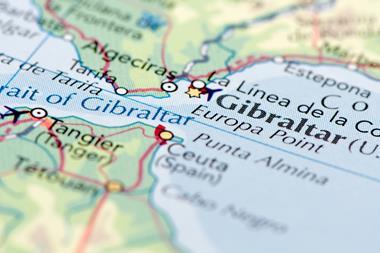The latest analysis of insurers’ SFCRs for 2020 has revealed that being the biggest business is not always best. Insurance Times and Insurance DataLab take a closer look at the financial results from the five biggest underwriters…
Aviva remains the largest insurer in the UK general insurance sector for gross written premium (GWP), but it is Bupa that has reported the best combined operating ratio (COR) out of the five biggest players in the market.
Analysis of the most recent set of Solvency and Financial Condition Reports (SFCRs) by new data insight and consultancy service Insurance DataLab, published exclusively by Insurance Times, has revealed that Bupa reported a COR of 92.2% for 2020.
This represents a 3.2 percentage point improvement on the 95.4% COR the health insurer reported for 2019.
Its 2020 COR is also the best ratio reported by any insurer included in Insurance DataLab’s analysis over the course of the last four years.
Indeed, Bupa was the only insurer to report a profitable COR in each year of this analysis.
The specialist health insurer has been buoyed by its best-in-class expense ratio, which stood at 31.9% for 2020 after it reported operating expenses of £663.4m.
Despite this impressive performance, expenses have been on the rise and Bupa was the only insurer to report a consistently increasing expense ratio over each of the last four years.
Bupa’s increase in expenses was more than offset by the reduction in claims facing the insurer over the course of 2020 - its net claims incurred fell by more than 18% to £1.3bn, leading to a loss ratio of 60.3%
In each of the three preceding years, claims had sat between £1.5bn and £1.6bn, with loss ratios of between 67.8% and 69.2%.

This improved performance in 2020 was a direct result of the restricted access to private medical care over the course of the year due to the lockdown measures introduced to limit the spread of Covid-19, as well as delays to elective procedures.
As such, the insurer is expecting claims to rebound in 2021, which could put pressure on the insurer’s profitability going forward. Indeed, had claims stayed at the £1.5bn level for 2020, Bupa’s COR would have risen to a loss-making 104%.
RSA
While Bupa may be on top for COR, it was RSA that reported the best loss ratio for 2020.
The aggregate position for the insurer, which includes solo entities RSA Insurance and The Marine Insurance Company, resulted in a loss ratio of just 57% for 2020, slightly ahead of second-placed Aviva with 57.8%.
This represents a marked improvement for the insurer, which previously reported an aggregate loss ratio of 64% in 2019.
But this latest reduction in claims was partially offset by an increase in operating expenses, which added 6.7 percentage points to the insurer’s aggregate expense ratio to take it to 46.5% for 2020, the highest in this analysis.
As a result, the insurer reported an aggregate COR of 103.5%, which despite being a slight improvement on 2019’s 103.9%, still places it in loss-making territory. This latest result also sees the insurer come in 2.8 percentage points higher than its closest rival Allianz, the only other insurer to report an aggregate COR north of the 100% breakeven point.
In property insurance, which is the insurer’s biggest single line of business and accounted for more than two-fifths of the overall GWP for solo entity RSA Insurance in 2020, the insurer reported an improved loss ratio of just under 55%, compared to 56.1% in 2019 and 60.0% in 2018.
But it was expenses that once again proved to be the stumbling block for the insurer, with RSA Insurance reporting a 2020 property insurance expense ratio of 51.9% for a COR of 106.9%, up from 101.1% in 2019.
This was, however, still an improvement on the 107.4% and 107.3% reported for 2018 and 2017 respectively.
RSA is well aware of the issues it faces with its overall cost base and in July 2020, chief executive Stephen Hester told analysts during the insurer’s second quarter results briefing that its cost-reduction programme, launched in 2019, would be extended.
Methodology
Insurance DataLab carried out an analysis of insurer Solvency and Financial Condition Reports (SFCRs) for the UK-based legal entities that make up each insurance group. Aggregate underwriting performances have been calculated from the solo SFCRs for each insurer, with ratios calculated from the aggregate premium, claims and expense figures for each insurer.
Allianz
While RSA was the only insurer to report a loss-making aggregate COR for each of the last four years, Allianz joined its rival in making an underwriting loss in both 2019 and 2020, reporting aggregate CORs of 101.6% and 100.8% respectively.

The Allianz aggregate position is made up of solo entities Allianz Insurance, Fairmead Insurance (formerly Legal and General’s GI arm), Highway and Liverpool Victoria, with the latter being the only business in the group to report a profitable COR in 2020 after improving its ratio by more than 11 percentage points to 89.7%.
Meanwhile, Fairmead Insurance reported the largest COR of the group, with a ratio of 137% for 2020 - 23 percentage points worse than the 114% reported for 2019.
While Fairmead was able to cut its operating expenses down from £448m in 2019 to £405m in 2020, the increase in the amount of reinsurance purchased by the insurer, with the proportion of net earned premium ceded to reinsurers rising to more than 67% in 2020, up from 37% a year earlier, means this has done little to reduce the company’s expense ratio.
Allianz Insurance remains the biggest underwriter of the four, reporting GWP of £1.9bn in 2020, slightly down on previous years as a result of the Covid-19 pandemic leading to an increase in mid-term adjustments and premium refunds in the insurer’s commercial book.
Personal lines insurer Liverpool Victoria reported GWP of £1.2bn in 2020, with Fairmead Insurance and Highway reporting GWP of £405m and £411m respectively.
Total GWP at an aggregate level now stands at almost £4bn, meaning that the German giant’s presence in the UK has more than doubled as a result of its recent acquisitions.
AXA
Another insurer benefiting from an increase in premiums is AXA, with the company reporting aggregate GWP of almost £4.4bn in 2020.
This is an increase of more than 8% on 2019 and secures the insurer’s position as the second largest insurer in UKGI after it overtook the combined Allianz businesses last year.
AXA’s business in the UK is comprised of solo entities AXA Insurance UK, AXA PPP Healthcare and XL Catlin UK, with the former accounting for more than half of the group’s overall premiums thanks to GWP in excess of £2.2bn in 2020. The healthcare business reported GWP of £1.3bn, down from £1.4bn a year earlier.
XL Catlin UK, meanwhile, has seen its GWP increase to more than £792m in 2020, up from £368m in 2019, mainly as a result of a transfer in of business from other AXA Group companies.
As well as being the smallest component of AXA’s UK underwriting businesses, XL Catlin UK is also reporting the heaviest losses.
The insurer reported a COR of 138.9% in 2020, up from 125.8% for the previous year. This increase was largely driven by a doubling of the expense ratio, which rose from 25.8% in 2019 to 54.5% for 2020, while the loss ratio fell 15.6 percentage points to 84.4%
The other two entities for AXA in the UK both reported profitable CORs, however, with AXA Insurance UK scraping under the breakeven barrier with a 99.9% COR, down from 102.7% in 2019 - the lowest ratio for the insurer across the four years of this analysis. AXA PPP Healthcare reported a 92.3% COR, which was only slightly up on 2019’s 92.1%.
This led to an aggregate COR of 99%, up by 0.2 percentage points on 2019’s 98.8% ratio, making AXA the only insurer to report a worsening aggregate COR for 2020.
As with Bupa, AXA PPP Healthcare benefited from a decrease in claims over the course of 2020, with the value of the medical expense insurer’s net claims incurred dropping by more than 14% to £897m, down from just over £1bn in 2019.

This pushed the insurer’s loss ratio down by 3.3 percentage points to 64%.
AXA Insurance UK, meanwhile, benefited from lower claims in its motor book, with net claims incurred across motor insurance policies falling by more than 18% and knocking more than 14.5 percentage points off its loss ratio.
This resulted in the insurer reporting a profitable motor COR of 91.4%, down from 104.9% in 2019.
As with other motor insurers, AXA will have benefited from the reduced driving miles experienced because of the lockdown measures introduced to combat the spread of Covid-19.
For example, a December 2020 study of 2,000 British drivers by Direct Line found that 55% of respondents are driving fewer miles than they did before the first lockdown in March of that year.
Aviva
Aviva is another insurer with a big book of motor business - motor insurance accounts for just over a third of solo entity Aviva Insurance’s overall GWP, making it the insurer’s second biggest line of business behind property.
Aviva Insurance reported motor GWP of £1.7bn for 2020, with a much-improved loss ratio of 63.3% (2019: 73.9%) – this was the driving force behind a highly profitable COR of just over 90% for 2020, compared to a ratio of 98.8% a year earlier.
At an aggregate level, which incorporates both Aviva Insurance and Gresham Insurance, Aviva reported GWP of £4.9bn, meaning that it holds on to its spot as the biggest insurer in UKGI by some distance.
But with Aviva Insurance, which accounts for more than 97% of aggregate GWP, reinsuring more than half of its business in 2020 and Gresham ceding more than 95% of premiums to reinsurers, Aviva’s net earned premium (NEP) came in at a reported £2.5bn in 2020, behind AXA’s £3.7bn and RSA’s £2.7bn, and just ahead of Allianz’s £2.4bn.
About Insurance DataLab

InsuranceDataLab.com is a powerful new data insight service, focusing on the performance of insurers, Lloyd’s syndicates, MGAs and brokers based in the UK and Gibraltar.
With hundreds of thousands of data points covering almost £100bn in annual gross written premium and featuring more than 700 insurance companies and brands, InsuranceDataLab.com provides easy access to comparable industry data to help benchmark performance, assess existing and potential partners and identify new opportunities.
Hosted by comedian and actor Tom Allen, 34 Gold, 23 Silver and 22 Bronze awards were handed out across an amazing 34 categories recognising brilliance and innovation right across the breadth of UK general insurance.





















































No comments yet